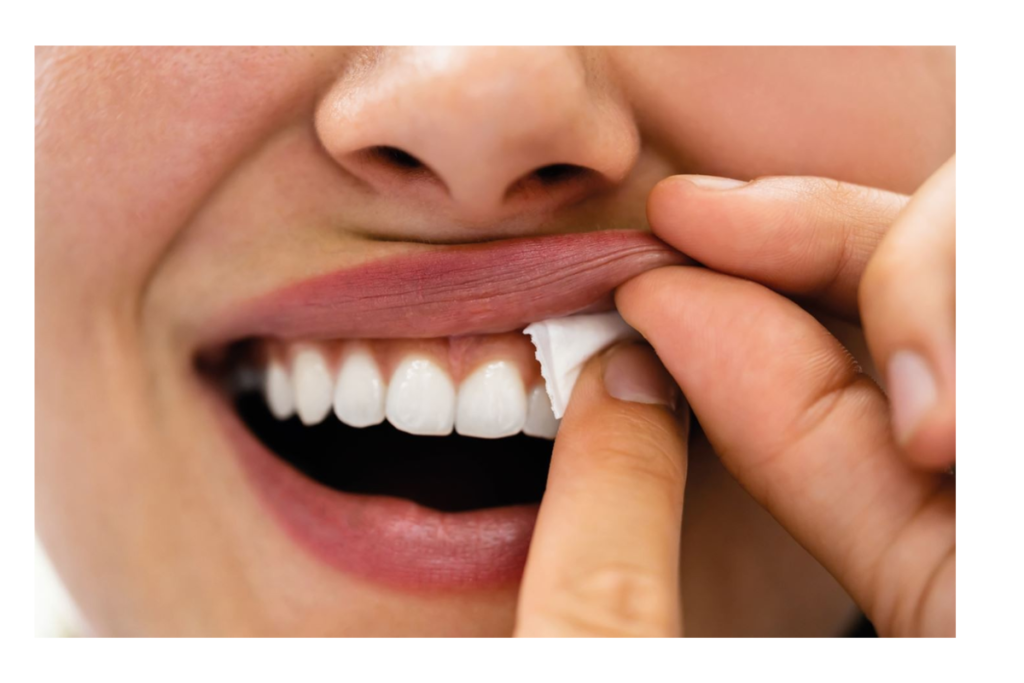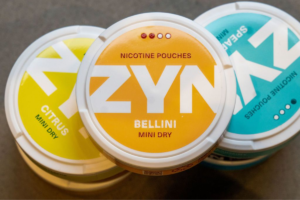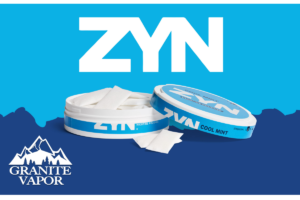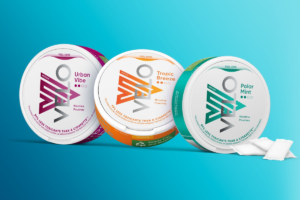Introduction
Over the past years, European nicotine consumption has shifted significantly to embrace a new drug that resembles tobacco but which can be chewed. This article examines the growing popularity of nicotine products in Europe and why they have become so popular today among smokers with such a significant impact on the smoke industry. With more people nowadays seeking for alternatives to traditional smoking, chewable nicotine has gained momentum as a convenient and potentially less harmful option.
Chewable nicotine options have risen in Europe due to these factors; perceptions around tobacco have changed while users desire a more discreet and pleasurable experience with nicotine. Understanding this change in consumer behavior is important for both individuals looking for healthier alternatives and businesses aiming to cater to this evolving market. In-depth study of chewable nicotine alternatives as seen in Europe, please join me.

The Need for Alternatives
In this case, the need to know why people are inclined to such alternatives is essential as we delve further into the European fashion of nicotine substitutes. There are several reasons why many people in Europe are interested in chewable nicotine.
First, a great number of people want to find other ways of using tobacco other than smoking because they know the dangers associated with smoking. Many individuals use tobacco products like cigarettes have been linked to numerous health problems such as respiratory infections and even cardiovascular diseases which make people decide on finding safe and non-hazardous ways that could be used for taking nicotine.
Secondly, consumers can choose from a wide selection of flavours and textures when it comes to chewable nicotine gums or tablets. For instance, unlike smoking tobacco with its limited variety in terms of flavors, nicotine comes in many exciting tastes that cater for different taste buds.
Thirdly, there is also a tremendous sensory aspect related to these consumables. These include diverse flavors and various textures found in gum-forms or swallowed-tablets made available for chewing down oral consumption so far not related directly with smoking at all.
Finally, this is where we should conclude by highlighting some of the importance’s that come along with consuming something like chewable nicotine substances instead of taking a cigarrete for example – it is safer; more convenient; enjoyable too! This will be followed by an examination on several types of chewy nicotine items accessible within the European markets.
Chewable Nicotine Products
Coming to the current topic, exploring trends of nicotine alternatives in Europe will be incomplete without a close scrutiny of the products that are fueling this change. European markets have seen an influx of myriad chewable nicotine products in recent times, thus enabling customers access various brands for their addiction satisfaction.
- Nicotine Pouches: Amongst chewable nicotine products, nicotine pouches are one of the popular options. These tiny and inconspicuous bags filled with nicotine-infused matter come in several flavors. They allow users smoke-free means through which they can get rid of tobacco related smell as well as mess from consuming nicotine.
- Chewing Tobacco: While traditional chewing tobacco is still available, modern versions have evolved to offer a more refined experience. For these reasons, there is different flavored chewing tobacco to suit European consumers’ tastes.
- Snus: Snus has been one of Europe’s most famous forms of chewable nicotine for many years especially in Sweden where it has originated. It either comes as small pouches or loose tobacco that users put under their upper lip. In comparison to smoking snus provides another method that doesn’t involve producing smoke by burning something.
- Dissolvable Nicotine Products: There are dissolvable strips or tablets that release nicotine slowly into the mouth manufactured by some companies today. Such items provide smokers with a convenient way to continue using cigarettes without drawing attention or breaking the habit.
- Chewable Nicotine Gums: While not as common as other substitutes, chewable nicotine gums also remain viable choice for those who want quit smoking. Unlike other methods of stopping smoking like patches etc., they take after ordinary gum but contain some quantity of absorbed nicotine so that it can be dribbled into blood stream little by little (Gosselin & Smith 2014).
For these chewable products containing nicotines there are variations in flavor and strengths among them such that users can only go for what meets their taste buds. The presence of a wide range of choices highlights the adaptability and attractiveness of nicotine substitutes.
In the following section, we are going to discuss the product’s attributes, flavors and nicotine content so as to give a full picture to European consumers who may wish to venture into this growing niche.
Health and Safety
In Europe, the rising popularity of chewable nicotine alternatives requires that we look at how safe these products are and compare them to likely hazards associated with usual smoking.
- Damage Limitation: Chewable nicotine items are commonly seen as a way to reduce harm. In contrast to conventional smoking, which involves inhaling smoke made from burning chemicals, chewable nicotine alternatives do not lead to tar production or involve smoke inhalation. This major difference significantly decreases the chances of respiratory and cardiovascular problems linked to smoking.
- Considerations for Oral Health: Though less harmful than cigarettes, chewable nicotine items have some risks. Some of the concerns are related to oral health particularly in instances where chewing tobacco is concerned as well as snus. Prolonged use of such products can result in gum recession, tooth decay or even oral lesions. These potential oral health consequences should be known by users.
- Nicotine Dependence: There is still a content of nicotine found in products that you can use on your gums which makes them addictive substances. The danger of developing an addiction to nicotine must be acknowledged by people who consider taking these products especially when they intend quitting smoking.
- Regulation and Quality Control: The safety of chewable nicotine products largely depends on regulatory oversight and quality control measures. European authorities have implemented regulations intended to ensure that these products satisfy specific safety standards. It’s crucial for consumers to choose products from reputable manufacturers who comply with these regulations.
The next section will explore European Market Trends where we shall examine the prevailing state of affairs concerning the landscape and consumer preferences regarding chewable nicotin e-products in Europe

European Market Trends
Shifting dynamics in the European market for nicotine alternatives chewed by consumers are driven by preferences that change while regulations develop. It is necessary to analyze these market trends in order to have a full understanding of it.
Increasing Demand: Europe has seen an increasing demand of chewable nicotine products as people seek for substitutes from traditional smoking. This surge in demand is as a result of several factors such as health concern, social acceptance and diversity experiences concerning nicotine.
Variety of Flavors: European customers are discovering a taste for smokeless tobacco products because they come with a multitude of flavors. Manufacturers offer various options including traditional tobacco, fruits, mint, among others; there even could be something more exotic. The multiple tastes provide users’ personal touch on their nicotine experience.
Online Retail: Chewable nicotine products have been made more accessible to customers within Europe due to easy online shopping. Many notable brands and manufacturers have set up their own websites/online stores allowing users to easily access and buy the items they want from them.
Regulatory Developments: Nicotine products guidelines and standards have been provided for by the European regulatory bodies. These legislation focus on ensuring safety of the product, accurate labeling information and right marketing practices that can appeal potential e-cigarette users. Manufacturers and retailers operating in this particular continent must comply with these policies.
Consumer Education: The emphasis today is on consumer education regarding proper usage of chewable nicotine alternatives (US FDA 2018). Health organizations and advocacy groups alike are attempting to inform consumers about responsible use, dangers associated with these methods, and how one can quit smoking completely.
Conclusion
As we explore chewable nicotine alternatives, we’ve found out what is behind the increased popularity of these products in Europe. Changing consumer preferences, need for alternative to smoking and health and safety concerns are responsible for increased use of nicotine in Europe.
Chewable nicotine products appear to be a promising way for reducing harm; users may rely on them as a less dangerous means of using nicotine as compared with traditional smoking. Nevertheless, it is important to note that these substitutes are not totally risk-free because oral health suffers and they consist various mouth diseases as well as being addictive due to its contents. For this reason, the right procedures have to be followed by everyone who wants to gain maximum from such alternatives.
The European market for nicotine products is dynamic and constantly changing, with increasing demand, a great variety of flavors being available on the market and regulatory developments shaping its landscape. Therefore, companies producing them together with regulatory agencies play an important role in ensuring product quality and safety as customers seek personalized and safer ways of consuming nicotine.
In summary, other options for tobacco consumption have become popular where people can switch from the traditional smoking ways but still enjoy their smoking cigarettes without any fanfare. With growing awareness and responsible use becoming more common place however, evolution can be expected making it contribute public health initiatives aimed at minimizing tobacco-related harm within this region.
For chewable nicotine alternatives’ further information resources consult reliable health organizations or healthcare professionals.
FAQs: Common Questions About Chewable Nicotine
As the European trend of nicotine alternatives continues to gain momentum, many individuals have questions about these products. Here are some common questions and their answers:
Q1: Are chewable nicotine products safer than traditional cigarettes?
A1: Chewable nicotine products are generally considered a less harmful alternative to traditional cigarettes. They do not involve the inhalation of smoke or the production of tar, which are major contributors to the health risks associated with smoking. However, nicotine products are not entirely risk-free, and users should be aware of potential oral health risks and the addictive nature of nicotine.
Q2: How do I choose the right chewable nicotine product for me?
A2: Choosing the right chewable nicotine product depends on your preferences and needs. Consider factors such as flavor, nicotine strength, and product type (pouches, chewing tobacco, snus, etc.). It’s essential to select a product from a reputable manufacturer that complies with regulatory standards.
Q3: Can chewable nicotine help me quit smoking?
A3: Chewable nicotine products are often used as a smoking cessation aid. They provide a way to satisfy nicotine cravings while reducing exposure to harmful substances found in traditional cigarettes. However, quitting smoking is a complex process, and individuals seeking to quit should consult with healthcare professionals and consider a comprehensive approach that may include behavioral support and counseling.
Q4: Are there age restrictions for purchasing chewable nicotine products in Europe?
A4: Yes, age restrictions for purchasing chewable nicotine products vary by country within Europe. Many European countries have implemented a legal minimum age for purchasing these products, typically ranging from 18 to 21 years old. It is essential to be aware of and comply with the age restrictions in your specific region.
Q5: What should I do if I experience adverse effects from chewable nicotine products?
A5: If you experience adverse effects from chewable nicotine products, such as nausea, dizziness, or other discomfort, discontinue use immediately. If symptoms persist or worsen, seek medical attention. It’s crucial to use these products responsibly and according to recommended guidelines.
Q6: Are there resources available for individuals looking to quit nicotine altogether?
A6: Yes, there are resources available for individuals looking to quit nicotine use altogether. Many European countries offer smoking cessation programs, helplines, and support services. Additionally, healthcare professionals can provide guidance and treatment options tailored to individual needs.
These FAQs aim to address some of the common questions individuals may have about chewable nicotine alternatives. If you have specific concerns or require more information, it is advisable to consult with healthcare professionals or relevant authorities in your region.







